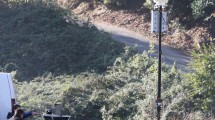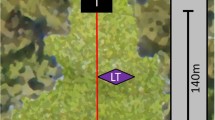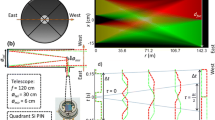Abstract
Radar and LiDAR entomology are emerging fields. Radars particularly polarimetric systems can be used effectively to detect and monitor insect pest population movements like migration. Radars can also be used to monitor high altitude migratory paths of insects. Doppler weather radars are able to detect and pinpoint area-wide population sources. They are also able to detect dense concentrations of airborne insects. Thus, radars and LiDARs contribute information on pest infestation density and population life stage. Integration of environmental condition to the above data will enable entomologist to predict the migration of insect pests. The portable harmonic radar system is a useful tool for effective detection of pest during both day and night. The harmonic radar system is also a useful tool to track the terrestrial insects. Even minute insects can be detected by a LiDAR system. Unlike radars, LiDARs can be used close to the ground for studying insects, including ecology and ethology.
Access this chapter
Tax calculation will be finalised at checkout
Purchases are for personal use only
Similar content being viewed by others
References
Brier HB, Rogers DJ (1991) Susceptibility of soybeans to damage by Nezara viridula (L.) (Hemiptera: Pentatomidae) and Riptortus serripes (F.) (Hemiptera: Alydidae) during three stages of pod development. Aust J Entomol 30(2):123–128
Chapman JW, Reynolds DR, Smith AD, Riley JR, Pedgley DE, Woiwod IP (2002a) High-altitude migration of the diamondback moth Plutella xylostella to the UK: a study using radar, aerial netting, and ground trapping. Ecol Entomol 27(6):641–650
Chapman JW, Smith AD, Woiwod AP, Reynolds DR, Riley JR (2002b) Developing-vertical-looking radar technology for monitoring insect migration. Comput Electron Agric 35:95–110
Chapman JW, Reynolds DR, Smith AD, Riley JR, Telfer MG, Woiwod IP (2005) Mass aerial migration in the carabid beetle Notiophilus biguttatus. Ecol Entomol 30(3):264–272
Chapman JW, Drake VA, Reynolds DR (2011) Recent insights from radar studies of insect flight. Annu Rev Entomol 56:337–356
Charles R, Vaughan H, Walemar K (1979) Radar, population ecology and pest management. In: Proceeding workshop, May, 2–4, vol 1978. Wallops Flight Centre, Wally’s Island, p 246
Chilson PB, Frick WF, Kelly JF, Howard KW, Larkin RP, Diehl RH, Westrook JK, Kelly TA, Kunz TH (2012) Partly cloudy with a chance of migration: weather, radars, and aeroecology. Bull Am Meteorol Soc 93:669–686
Crawford A (1949) Radar reflections in the low atmosphere. Proc Inst Radio Eng 37:404–405
Drake VA, Reynolds DR (2012) Radar entomology: observing insect flight and migration. CABI, Wallingford, p 489
Drake VA, Drake VA, Gatehouse AG (1995) Insect migration: tracing resources through space and time. Cambridge University Press, Cambridge, p 478
Gregorio E, Gené J, Sanz R, Rocadenbosch F, Chueca P, Arnó J, Rosell-Polo JR (2018) Polarization LiDAR detection of agricultural aerosol emissions. J Sens 2018:1864106
Hagler J, Mueller S, Teuber LR, Van Deynze A, Martin J (2011) A method for distinctly marking honey bees, Apis mellifera, originating from multiple apiary locations. J Insect Sci 11(1):143
Jackson PL, Straussfogel D, Lindgren BS, Mitchell S, Murphy B (2008) Radar observation and aerial capture of mountain pine beetle, Dendroctonus ponderosae Hopk.(Coleoptera: Scolytidae) in flight above the forest canopy. Can J For Res 38(8):2313–2327
Jansson S, Brydegaard M (2018) Passive kHz LiDAR for the quantification of insect activity and dispersal. Anim Biotelem 6(1):6
Kho J-W, Jung M, Lee D (2018) Evaluating the efficacy of two insect detection methods with Riptortus pedestris: portable harmonic radar system and fluorescent marking system. Pest Manage Sci 75:224–233. https://doi.org/10.1002/p25106
Kim et al (2018) The CALIPSO version 4 automated aerosol classification and lidar ratio selection algorithm. Atmos Meas Tech 11:6107–6135
Lee DH, Wright SE, Boiteau G, Vincent C, Leskey TC (2013) Effectiveness of glues for harmonic radar tag attachment on Halyomorpha halys (Hemiptera: Pentatomidae) and their impact on adult survivorship and mobility. Environ Entomol 42(3):515–523
Leskinen M, Markkula I, Koistinen J, Pylkkö P, Ooperi S, Siljamo P et al (2011) Pest insect immigration warning by an atmospheric dispersion model, weather radars and traps. J Appl Entomol 135(1–2):55–67
Lim U (2013) Occurrence and control method of Riptortus pedestris (Hemiptera: Alydidae): Korean perspectives. Kor J Appl Entomol 52(4):437–448
Mascanzoni D, Wallin H (1986) The harmonic radar: a new method of tracing insects in the field. Ecol Entomol 11(4):387–390
Mei L, Guan ZG, Zhou HJ, Lv J, Zhu ZR, Cheng JA, Somesfalean G (2012) Agricultural pest monitoring using fluorescence LiDAR techniques. Appl Phys B 106(3):733–740
Milanesio D, Saccani M, Maggiora R, Laurino D, Porporato M (2016) Design of a harmonic radar for the tracking of the Asian yellow-legged hornet. Ecol Evol 6(7):2170–2178
Osborne JL, Clark SJ, Morris RJ, Williams IH, Riley JR, Smith AD et al (1999) A landscape-scale study of bumble bee foraging range and constancy, using harmonic radar. J Appl Ecol 36(4):519–533
Ovaskainen O, Smith AD, Osborne JL, Reynolds DR, Carreck NL, Martin AP et al (2008) Tracking butterfly movements with harmonic radar reveals an effect of population age on movement distance. Proc Natl Acad Sci 105(49):19090–19095
Poffo DA, Beccaece HM, Caranti GM, Comer RA et al (2018) Migration monitoring of Ascia monuste (Lepidoptera) and Schistocerca cancellata in Argentina using RMAI weather radar. ISPRS J Photogramm Remote Sens. https://doi.org/10.1016/j.isprsjprs.2018.05011
Reynolds DR, Riley JR (1997) Flight behaviour and migration of insect pests. Radar studies in developing countries, vol 71. Natural Resources Institute (NRI), Chatham
Riley JR, Greggers U, Smith AD, Reynolds DR, Menzel R (2005) The flight paths of honeybees recruited by the waggle dance. Nature 435(7039):205
Riley JR, Chapman JW, Reynolds DR, Smith AD (2007) Recent applications of radar to entomology. Outlooks Pest Manage 18(2):62
Smith AD, Riley JR, Gregory RD (1993) A method for routine monitoring of the aerial migration of insects using a vertical-looking radar. Philos Trans R Soc (Biol Sci) 340(1294):393–404. https://doi.org/10.1098/rstb.1993.0081
Veneziano D, Hallmark S, Souleyrette R (2002) Accuracy evaluation of LIDAR – derived Terrain data for highway location. Computer – Aided Civil and Infrastructure Engineering
Acknowledgement
The authors are thankful to the Director of IISC Bangalore, HOD Aerospace engineering and to the Department of Plant Protection and Biology. Swedish University, Sweden select photos and figures have been retrieved from the published papers, thankful to the authors and publishers.
Author information
Authors and Affiliations
Editor information
Editors and Affiliations
Rights and permissions
Copyright information
© 2020 Springer Nature Singapore Pte Ltd.
About this chapter
Cite this chapter
Dwivedi, M., Shadab, M.H., Santosh, V.R. (2020). Insect Pest Detection, Migration and Monitoring Using Radar and LiDAR Systems. In: Chakravarthy, A. (eds) Innovative Pest Management Approaches for the 21st Century. Springer, Singapore. https://doi.org/10.1007/978-981-15-0794-6_4
Download citation
DOI: https://doi.org/10.1007/978-981-15-0794-6_4
Published:
Publisher Name: Springer, Singapore
Print ISBN: 978-981-15-0793-9
Online ISBN: 978-981-15-0794-6
eBook Packages: Biomedical and Life SciencesBiomedical and Life Sciences (R0)




